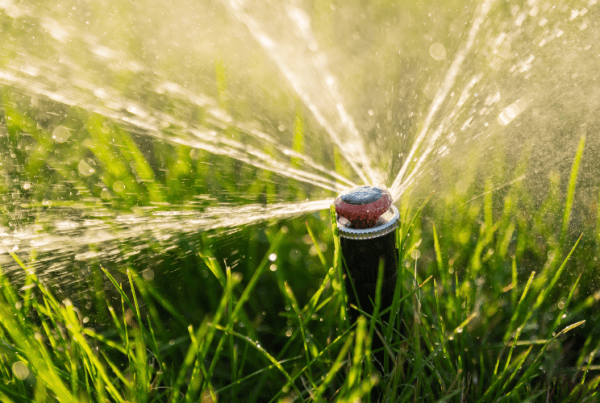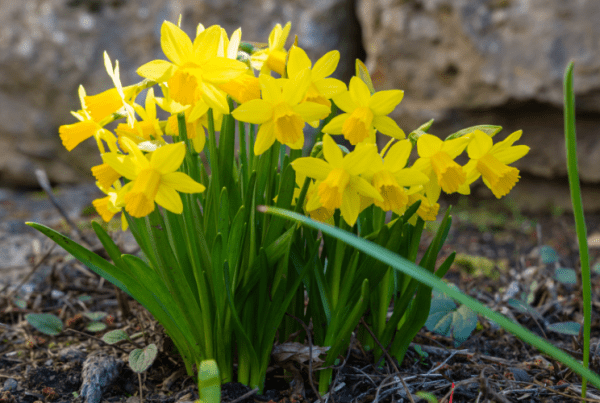The chill in the air is back, but spring is here.
This means there is work to do outside. If you wait until the picture perfect spring weather, you might find yourself with more work than you can accomplish in the time left before plants explode with growth. It is way easier to rake a garden when the perennials aren’t up, but some of you may be finding that your plants got a big boost from the 80 degree weather two weeks ago. That’s OK. Remember to keep an eye out while raking and stepping around in your garden beds.
What does this mean for you?
It means you need a checklist of things to do starting at the first signs of spring so that you don’t find your garden has grown up past the point of care.
1. Spring Clean Up
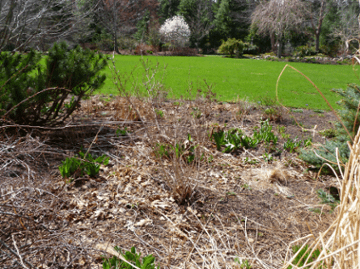
You do a great deal of clean up in the fall in anticipation of all the work ahead in the spring. But if you are like many home gardeners your energy gets diverted to other things in the fall and the cleanup is left to spring. Cleaning up leaves and debris is an important task in keeping the garden free of pathogens, mold, and rot that you don’t want in your garden. Now this “rot” and “mold” is a natural function of decomposition, but you want it in your compost pile not your managed garden bed. So if you haven’t cleaned up from fall or even the winter, time to get to it.
2. Maintain Edges
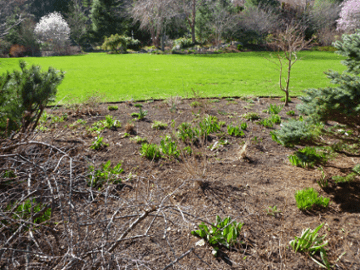
Edging the garden bed is a very important task. Typically you want crisp lines in the garden, but you may not like artificial or even stone edging in your beds. By using an edging tool to cut the grass edge each spring, you keep the garden and lawn neatly in their place. This is a task that can be done later in the season (summer or fall), but it should be done once a year to avoid the creep of turf grasses in to the garden zone.
3. Shrub Pruning
The springtime is the right time to prune some shrubs and the wrong time to prune others. First, look through your garden to see if there is any damage from the winter. Any broken, bent, twisted or otherwise undermined branching should be pruned now regardless of the plant type. A clean cut is easier for the plant to heal from as it emerges from dormancy than a tear. Second, select your shrubs that set buds on new wood and prune those. Top on this list is Spirea japonica. The vigorous grower can be pruned hard in the spring for a shorter fuller plant with lots of spring flowers. Hydrangea like Endless Summer and Annabelle are also good shrubs to prune now. As soon as the threat of hard frost is gone, it will be time to prune butterfly bush and caryopteris – look for the new growth to have emerged on these tender shrubs before pruning. Third, don’t forget rose pruning in this task. If you have shrub roses, climbing roses, and rambling roses now is the time to prune. Again, be sure the threat of hard frost is over, but do prune the roses down by removing one quarter to one third of the plant. Prune out any dead canes too. This will make for a much happier rose as it warms up.
What not to prune?
Azaleas, Rhodies, and Mountain Laurels that look brown and dried up (desiccated) from the winter. These plants may look dead but they may very well have life in them. Never prune this set of plants until after they flower. By this time anything that is truly dead will look it. These plants can fool you by bouncing back from a pretty sad state in early spring.
4. Perennial Clean Up
Any perennial foliage not cut off and cleaned up in the fall needs to be cleaned up now. You can leave perennial foliage up in your pollinator garden to provide a food source for the birds. However, this may also provide a feeding frenzy buffet for the voles that may inhabit your yard. So be more selective and leave only the sturdy plant seed heads for the birds – Rudbeckia, Sedum, and Astilbe among them.
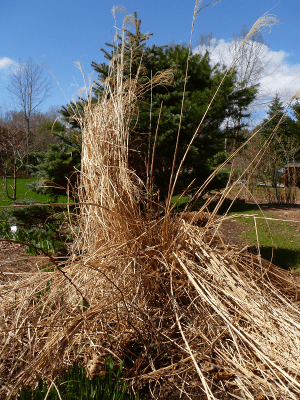
Ornamental Grasses
Plants that you can keep up for the winter are the ornamental grasses. The foliage is so pretty with any snow you may have. So now is the time to cut back the grasses to get them ready for the spring growth. Don’t wait too long to do this task because while you can’t see it, with each increasing minute of light and added degree of temperature those grasses are waking up in the core and starting to push up through the old sheaths. In this category we would encourage the cutting back of Carex and Liriope as well. This will make for a much neater and prettier look as the new foliage emerges.
5. Dividing Perennials
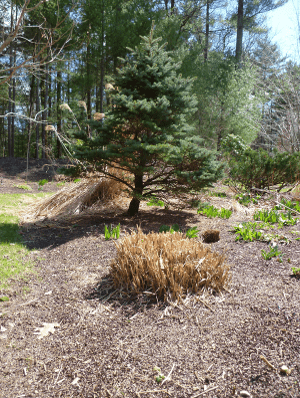
While you might feel too tired after all this to even think about dividing, we are going to encourage you to make a list of plants that need it. How do you know? If you see crowding now…it will be unbearable in the summer. Any perennials that are encroaching on one another or that look like they have a bald spot in the center need dividing. Just choose the worst offenders in this category to tackle now. Plants that we often see needing dividing in this time of year are daylilies, irises, hostas, and grasses. Mark the clumps with flags to remind you of this important task. Divide the biggest clumps now. Maybe save the next set for a fall divide to get a jump on next spring.
The more work you can put into the spring gardening the better your garden will perform in the summer and fall. Remember to keep notes or even take pictures. This might inspire you to do more of this work come fall as a way to make spring easier!
Happy Gardening!



